Living In The Anthropocene – A Frame For New Activism
By Mark Garavan
03 November, 2015
Feasta
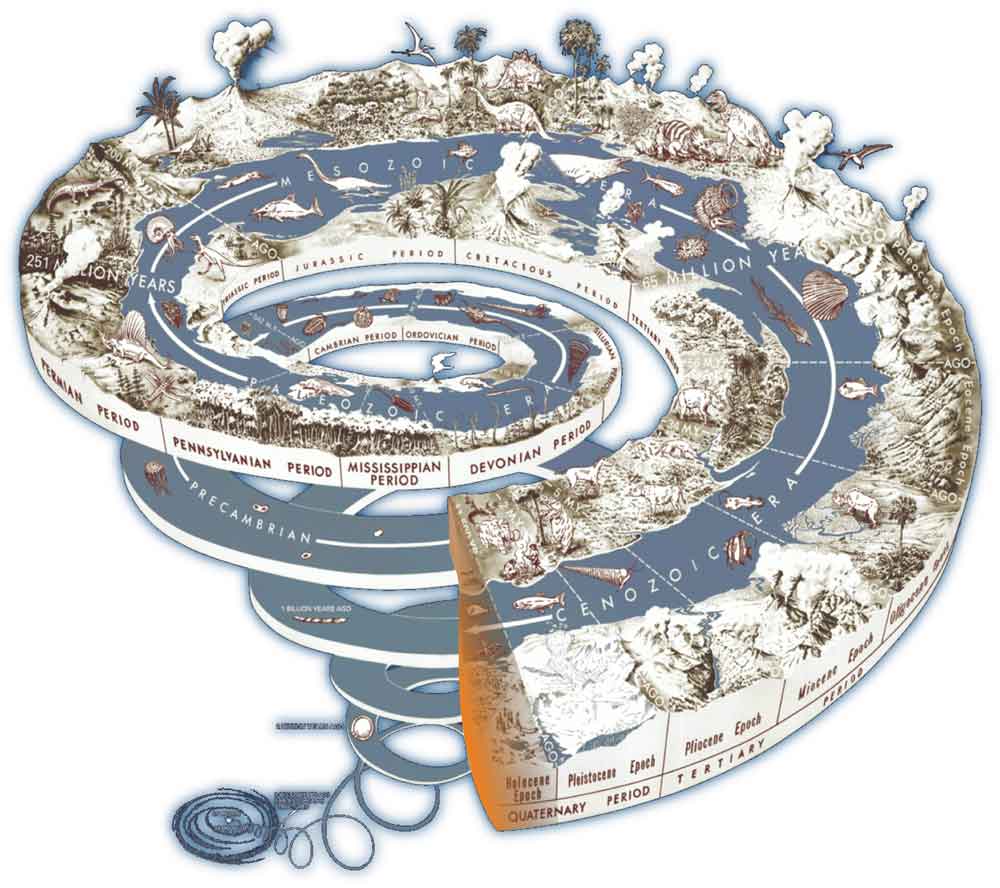
Phtoto Credit: Climatica.org.uk
We are living in a new time. A new world has emerged. Like many things that are new on such a scale it is at once frightening, disturbing, uncomfortable. We have emerged from the geological epoch of the Holocene into a new epoch designated as the Anthropocene.[1] This notion of the Anthropocene refers to a profound realisation that human aggregate activity is now the single most decisive force shaping the planet. We have become the most significant geological agent acting on the Earth. For better or worse we have broken through a certain limit and possess now the power to determine the biosphere of the planet.
In the Anthropocene the old simplicities are gone. We are no longer human subjects acting upon an objective nature ‘outside’ us. Nature and human are now bound together. Free nature is over. Free humanity is over. They are relics of the Holocene. In our new age, Earth and Human are entangled irrevocably together. Welcome to the era of Earth-bound responsibility! The assumptions, the myths, the illusions of the Holocene no longer apply.
This recognition of a new epoch is not the result of argument or claim or campaign. It is not a question of belief, unless one thinks one must believe in reality itself. The new age is grounded in a measurable and observable set of facts, facts on such a scale as to be beyond questions of faith. The difficulty in recognising the new epoch is therefore not one of evidence. Rather, the challenge before us is that the vast panoply of institutions, practices, ideologies and cultures which structure human meaning and behaviour are the product of the Holocene. Our dominant and still prevailing worldview is rooted in the epoch of climate stability and security where humans were a discrete species inhabiting the objective Earth as free subjects.
This no longer applies. The Holocene gave rise to all the great civilisations of human culture, the philosophies, the great religions. How can we possibly re-think all of this in the little time that epochal change offers us to adjust and adapt? Because what is at stake could not be clearer. Either we adapt to the reality of the Anthropocene or we collapse into the perils of extinction as yet another mal-adaptive life-form.
In this brief paper, which serves only as an introduction to a more comprehensive treatment, I will sketch in summary terms the implications of living in the Anthropocene. Knowing where we are is one of the most basic life-skills for dwelling on planet Earth. The challenge is to re-think and re-inhabit our planet. This challenge is for everyone even for those who consider themselve3’right’ on the environmental question. Environmentalism too must now radically change. The Anthropocene will sweep all of the Holocene before it including our notions of environmentalism and that old chestnut of comfort ‘sustainability’.
From Holocene to Anthropocene – a series of sketches
Before proceeding with my potted sketches (literally) it might be wise to outline some basic definitions. Relying, as one tends to do today, on Wikipedia the Holocene can be defined as:
“… the geological epoch that began after the Pleistocene at approximately 11,700 years BP and continues to the present. The Holocene is part of the Quaternary period. Its name comes from the Greek words ὅλος (holos, whole or entire) and καινός (kainos, new), meaning “entirely recent”. It has been identified with the current warm period, known as MIS 1, and can be considered an interglacial in the current ice age based on that evidence. The Holocene also encompasses the growth and impacts of the human species worldwide, including all its written history, development of major civilizations, and overall significant transition toward urban living in the present. ”
The Anthropocene is defined as:
“… a proposed epoch that begins when human activities started to have a significant global impact on Earth’s ecosystems. The term – which appears to have been used by Russian scientists as early as the 1960s to refer to the Quaternary, the most recent geological Period – was coined with a different sense in the 1980s by ecologist Eugene F. Stoermer and has been widely popularized by atmospheric chemist, Paul Crutzen, who regards the influence of human behaviour on the Earth’s atmosphere in recent centuries as so significant as to constitute a new geological epoch for its lithosphere. As of April 2015, the term has not been adopted formally as part of the official nomenclature of the geological field of study.”
Less detached definitions of the Anthropocene include the following:
“A period marked by a regime change in the activity of industrial societies which began at the turn of the nineteenth century and which has caused global disruptions in the Earth System on a scale unprecedented in human history: climate change, biodiversity loss, pollution of the sea, land and air, resources depredation, land cover denudation, radical transformation of the ecumene, among others. These changes command a major realignment of our consciousness and worldviews, and call for different ways to inhabit the Earth.” [2]
Crucial to the identification of the Anthropocene is determining whether there is an objective, measurable impact on the planet, especially on its life-forms, which may be discoverable by scientists many centuries, indeed, millennia from today. Many scholars of this topic suggest that the detonation of test nuclear devices beginning in 1945 is precisely that – a clear marker of a new order of impact on the Earth’s very structure of life which will be forever present as an observable impact on the geological and biological record.
As noted in the definition above, the official, academic geological approval of this terminology is not yet achieved. That may occur in 2016 or not.
Nonetheless, the heuristic and rhetorical potency of the Anthropocene has already had a significant impact on a raft of social sciences where it has become central concepts for theorists in history, sociology, anthropology, geography and philosophy.[3] It is not I hope too reckless a claim to suggest that the intellectual and conceptual space opened up by the identification of the Anthropocene is having a major innovative impact on the social sciences generally permitting theory to finally step beyond the modern and ‘post-modern’ epistemes of the 20th century. This new frame may also offer a decisive shift in our understanding of the ‘environment’ as merely something ‘out there which surrounds us’ and of environmentalism as a social and political movement.
The justification (at least within social science terms) for the Anthropocene may be best glimpsed in terms of whether something truly new has happened. If one may present cultural history in very crude and linear terms then a number of key human-nature movements can be discerned, at least within the Western historical trajectory. This after all is the trajectory that gave rise to modernity and has brought us to the impasse we presently find ourselves in.
The first movement within Indo-European culture was likely to have been that of animism – the notion of the Earth and ‘nature’ as teeming with multiple points of consciousness. The sensibility that arose seems to be one of either communing with, or placating, these nodes of spirit manifested within animate and inanimate forms of life.
The Judeo-Christian movement represented a significant change. Here was emphasised the notion of the human as ‘created’ by a supernatural being who is external to nature and Earth. The human stands apart from the rest of creation – present but absent, image of God but condemned to struggle within the brutal requirements of life on Earth.
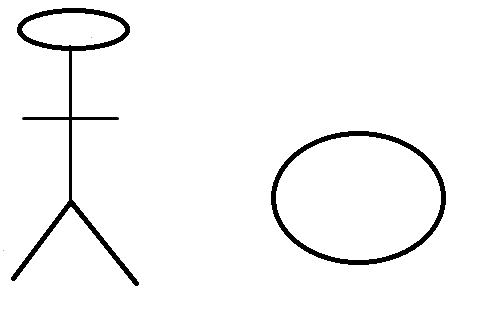
Figure One: Human and Earth as separate
The image here is of the human separate and alienated from the Earth – a being destined ultimately for an unworldly heaven rather than an Earthling.
It is little wonder that this sensibility led inevitably to anthropocentrism – the Universe and the Earth seen in terms of their value to the human, the human as superior to, and above, brute, inanimate creation. The Cartesian revolution of the early 17th Century further augmented this view of human consciousness trumping mindless matter – cogitans above extensa.
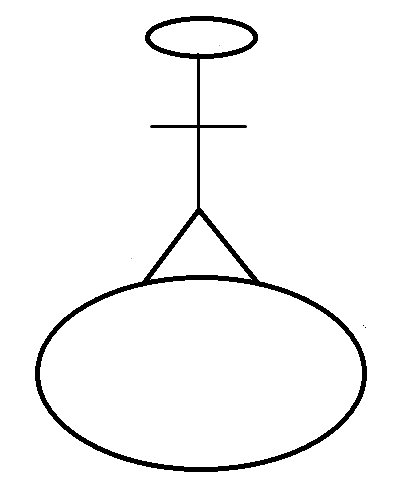
Figure Two: Human superior to Earth
The license this gave to the human permitted the emergence of industrialism and capitalism. The Earth was now mere resource, mere empty space to be shaped and conquered and utilised for human development and progress. The empty formlessness of nature required human agency and expansion to give it meaning and value.
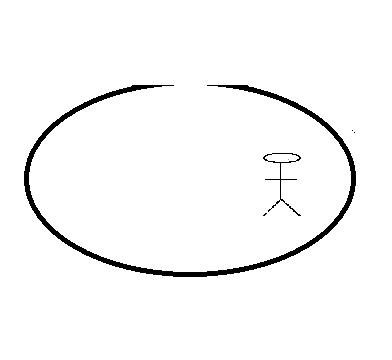
Figure Three: Human as exploiter/developer of an unlimited Earth
By the second half of the 20th Century it became clear to many that nature had in fact limits. Resources were in fact finite. Pollution could only go so far in terms of the planet’s carrying capacity. Human activity had to be at least tempered, rendered in the new jargon ‘sustainable’. Environmentalism as a modern sensibility was born.
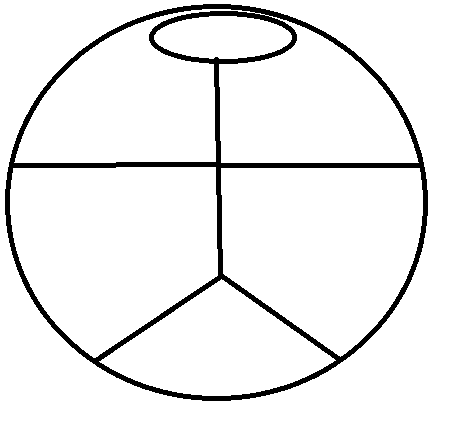
Figure Four: Human reaches limit of Earth’s resources and carrying capacity
For many, indeed most, this remains the sensibility of today. We are caught in a world of exploitative limits. These limits are imposing stresses on us. We are told we merely need new policies and approaches. This sensibility still sees the human as subject and agent, confronting a nature external to us but affected by us. We exist in a relationship with nature. Our task is merely to learn to relate better.
But now, alas, we have indeed come to the end of this world. The new world begins with the recognition that nature as object, as free, as autonomous, is over. The line was crossed. There is no nature outside the human.[4] There is no human outside nature. Our impact is such that nature is us, is being fashioned by us. Rather than being inert recipients of our action, the Earth (Gaia) has stirred and is also now active, an agent in its own right, giving us feedback, responses, messages that we must receive. We are tied together now. There is no gap between us. The old human sensibility of the Holocene is no longer adequate. A new mode of being human is required, one that is profoundly responsible for all it does, but must be profoundly attentive to the new agent stirring and moving all around us – the Earth itself. We have entered the inter-subjective, multi-agential Anthropocene world. Shall we be terrified or exhilarated?
Birth of the Anthropocene
The Anthropocene began in a clear moment when human impact started to shape the planet’s very life-forms in a manner greater than any other discernible force or in a manner quicker and sharper than other agents. For our purposes now we can leave the argument to one side as to when this can be dated. Three key facts determine that unwittingly, unintentionally, we have fallen into a new world.
1. The planet, especially its bio-diversity, has been / is profoundly shaped by human behaviour – it is the single biggest force presently at play;
2. Climate change is occurring;
3. There is an absolute limit to economic growth.
The data on human global impact is simply staggering[5]. Bio-diversity, land use, water use, resource use, urbanisation, and so on, have been utterly altered by human behaviour. Almost nowhere lies outside the realm of human impact. Barely any life-form exists without the chemical markers of human activity. We are not one species among many. We are of a different order altogether.
Though the loss of bio-diversity is the largest single impact, our greatest recognition of the effect of human behaviour is possibly in climate change. Once this was a theory. Then a distinct possibility. Now it is our reality. It is underway. There is no credible scientific doubt. The only issue is how far it proceeds and how quickly. Will our climate alter in a continuous progression or tip suddenly into a new climatic steady-state? We do not know. Our models tell us one thing. The paleo-climate record tells us something else.
The point though is that climate (all our accumulated weather events over space and time) is no longer ‘natural’. It is us. We have made it like this. But altering climate is not simply changing weather patterns. Climate is nature, nature is culture. When the rains fall, where the rains fall, if the rains fall, determine the entire movements of civilisation.
The apparently safely inanimate background of climate and nature has stirred, has become animate. It addresses us, demands response. It is no longer reliable, predictable, secure. We have entered a world of inter-agency between the human and the non-human Earth. This is the Anthropocene. From once believing ourselves humans free upon a stable nature to do as we wish we find ourselves newly earth-bound, tied into the Earth itself, as part of it.
What is clear is that we cannot go on as before. The old mode of living, the mode developed in the Holocene, is no longer possible. Business as usual is not an option. At its most simple level our adherence to the goal of perpetual economic growth is rendered dysfunctional and literally impossible. Growth simply cannot be the paradigm for development in the Anthropocene. If U.S. standards of consumption were globalised then five separate Earths would be required to support it. But there is only one Earth. It just cannot be. We have hit the limit of the possible within the economic growth model. Capitalism has no place now other than as destroyer of a world.
Implications of the Anthropocene
Epochal shifts are extraordinary times. They are full of possibility. They are full of danger. Everything is possible. Nothing is guaranteed. The objectivity underlying the emergence of the Anthropocene does not nevertheless deliver us automatically into new modes of presence on the Earth, new forms of inter-species and human justice. Politics endures. Arguments continue. Options remain. Choices tantalise. In short, the Anthropocene could lead us to deliverance or doom.
The objective realisation of human-Earth entanglement and the limits that necessarily follow from that do not in themselves resolve matters. We remain beings who choose. Our choices are set by our perceptions of self-interest, by the immense inequalities and environmental injustices that exist among us and by the spontaneous framings of meaning and reality configured by our ideological perspectives. We cannot escape all of this. We cannot avoid the messiness of politics and argument. Human responsibility for our precipitation into the Anthropocene is not evenly distributed. The Western capitalist world is largely where responsibility lies and even there the fingers of judgement must point to those in the socio-economic upper tiers.
But what are we to do? How shall we fashion a civilisation fit for the Anthropocene when all of our Western cultural references and our institutions and practices are products of the Holocene. Even our dissenting discourses of Marxism, Feminism and Environmentalism are rooted in a Holocene conceptual framework whereby we perceive a human subjectivity significantly cut off from nature’s inert objectivity.
Everything is possible. Authoritarian Fascism all the way to new modes of intra-human and human- Earth solidarity and co-living lie open. But some things are clear. Some things must happen if extinction of the human project on Earth is to be avoided. Three immediate implications at least seem apparent.
1. We need to think!
2. We need to take the responsibility of being in the Anthropocene
3. We need to recognise that unlimited economic growth (i.e. Capitalism) is no longer possible as a sensible model for development
The notion that we need to think may seem banal. We live in a culture which values feeling, emotion, expression. Fast thought is all about us in soundbites, power-point slides, net-based summaries. It seems to me that we must return to thought, recover our innate human capacity to think our way out of challenge. Deep thinking is needed in a world where our sense of deep history is to be recovered or discovered. Human history begins in the depths of evolutionary time when the first eye emerged, the first ear, the first mammal limb, the first of each thing that makes us what we are. Our thinking is what enables us to inhabit reality – the world as it really is – and see past the murky atmosphere of symbolic and ideological interpellation. Here is the real task for a renewed education in the Anthropocene, one which prepares us to be positive participants in the cosmogenesis of Human-Earth reality rather than the outdated late-Holocene agitation of being fit for capitalist market engagement.
If the Anthropocene serves as a new frame within which to view and construct social modes of presence then we must accept our collective responsibility for our human status as geological drivers of our planet. It is as it is. This is our fate, our lot, what modernity with its striving for rationality, progress, development, wealth, anthropocentrism has bequeathed to us. Most of humanity derived limited benefit from the great turmoils of modernity. The injustice is clear. But we must fashion together a way of inhabiting the Earth as it is. The challenge of changing our energy systems, our food systems, our consumption systems, our transportation systems, and so on are immense. We do so while the vast majority of humanity believe themselves inhabitants of the Holocene. The vast majority of humans act, behave and believe as if the Holocene stability was still holding sway.
We occupy different worlds. The inhabitants of the Ptolemaic cosmos stood eyeball to eyeball with those of the Copernican. Though one held absolute power and dominated symbolic space the other inhabitants were standing on the actual world of orbit and motion. The truth of the Earth is not to be denied. It lies beyond the reach of human symbolisation and ideology.
The great political fault-line is not as the late politics of the Holocene imagine, that is between the economics of austerity versus the economics of Keynesian expansion. Rather it is between the adherents of economic growth (which include both right and left) and those who realise we must move beyond growth, beyond capitalism and its strange alter of State communism. Neither will serve in the Anthopocene. Living in the Anthropocene is living within planetary limits. We are finally recognisably Earthbound. The new human subject is no longer in nature – they are nature. Nature is no longer nature – it is indelibly become humanised. Anthropos is the new agent of geostory. As argued above this does not mean no politics – it just means that politics starts from here.
Final Comments
New thoughts, new perceptions are often strange at first. They seem peculiar, unclear. They don’t fit in with our expectations, our assumptions. The old certainties which formed the background stability of human political and economic life are faltering. Something new is taking place. Our culture, our ideologies, our practices remain centred in a Holocene world that has given way to a new epoch. While there is but one world of course two human modes of inhabiting that world now confront each other. As social theorist Bruno Latour has said: ‘There is indeed a war for the definition and control of the Earth: a war that pits – to be a little dramatic – Humans living in the Holocene against Earthbound living in the Anthropocene’.[6] In one we thought we were above the world, superior to it. In the other, we have stumbled to the recognition that there are necessary limits, that we must inhabit the world within constraints required by the Earth itself.
For those Earthbound in the Anthropocene our fellow humans of the Holocene appear to be inhabitants of a strange, mythical, unreal place. A bizarre parallel world where fossil fuels are developed, where consumption bewitches, where species die. Language itself in the Holocene seems devoid of content.
‘Development’, ‘progress’, ‘sustainability’, the ‘environment’ sound hollow and disconnected, spoken by confused subjects seeking safe purchase in a diminishing fantasia version of the planet. We need a new language, a new way of speaking, a new way of articulating our human-Earth inter-subjectivity. We cannot go back to pre-modern sensibilities for this. That too is a false turn. We are inescapably the beings of modernity. But our sciences, natural and social, need to fashion Anthropocentric resonance. We need deep history, deep sociology, deep economy – that is, frameworks of meaning that situate the human within far wider processes of evolution and life.
Mark Garavan is director of Feasta and a Social studies lecturer and social worker
Endnotes
[1] The official confirmation of this awaits the 2016 meeting of the Geological Society of London.
[2] See more at: http://globaia.org/portfolio/cartography-of-the-anthropocene/#sthash.z65FPmYN.dpuf
[3] See for example Chakrabarty, R. (2009), The climate of history: four theses. Critical Enquiry 35 (2): 197-222.
[4] McKibben, B. (1989), The End of Nature. New York: Random House.
[5] See, for example, Steffen W. et al (2004), Global Change and the Earth System: A Planet Under Pressure. Berlin, Heidelberg, New York: Springer-Verlag.
[6] Latour, B. (2015), Telling Friends from Foes in the Time of the Anthropocene (pp. 145-155), in Clive Hamiliton et al (eds) The Anthropocene and the
Global Environment Crisis – Rethinking Modernity in a New Epoch. London: Routledge.
Featured image: https://theoldspeakjournal.files.wordpress.com/2013/12/0fbee-geologicaltime-scale-bmp.jpg?w=604

